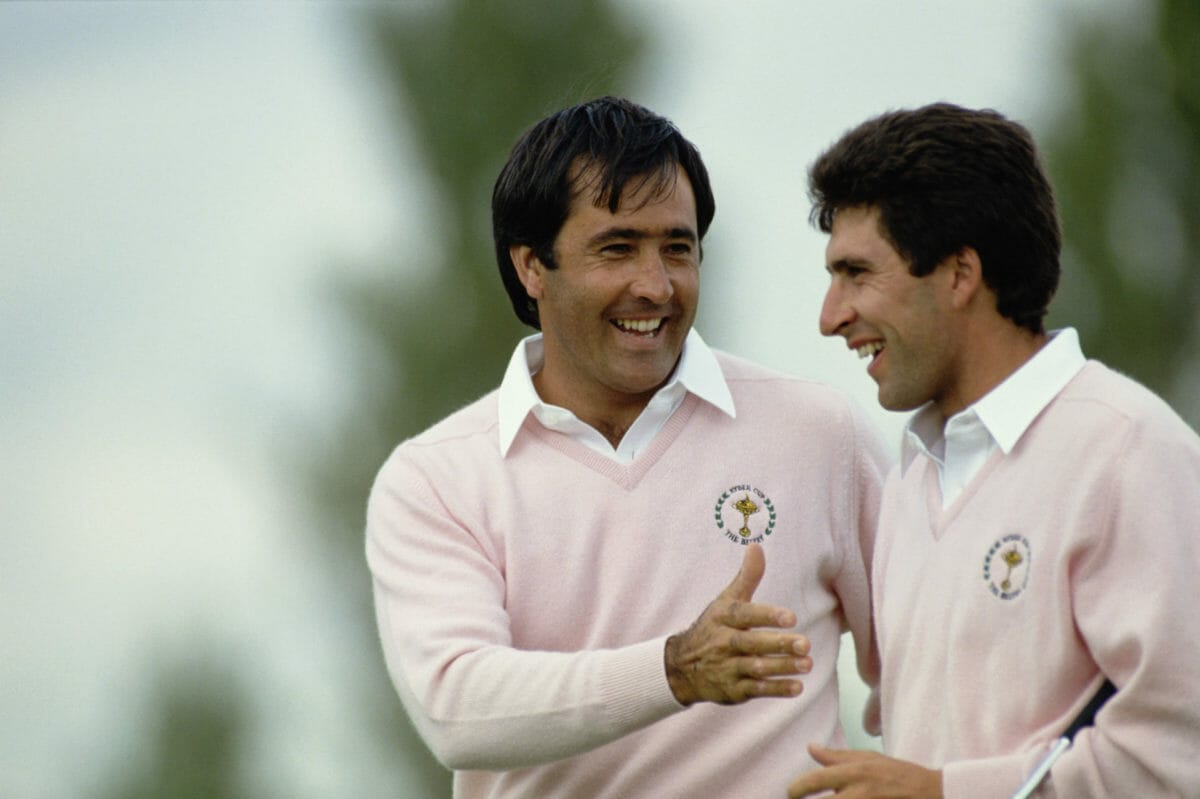Some go to Mecca; some go to Croagh Patrick; some go to the Sistine Chapel, some prefer to hike all the way across Northern Spain to Santiago di Compostela but my wife and I went to Pedrena, a picturesque, fishing village and commuter-dormer location for 1500-souls, 18-kilometres from Santander by road but only a short boat ride of less than 2 kilometres across the bay from the thriving port city that lies under the shadow of the remarkable Cantabrian Mountains range.
Pedrena is where Seve Ballesteros grew up, went to school and learned to play golf. He never lived anywhere else throughout out his entire life. The golden, sandy beach stretches for miles. The boat trip across the bay from Santander was an emotional experience because one knew that Seve and his bicycle would have made exactly the same trip so often.
Ever since Seve passed away in 2011, at the relatively young age of 54 after a very public and brutal fight with brain cancer, my wife and I, both felt an urge to make this nostalgic trip in order to pay our respects to a golfer who caught our imaginations like no other.
Incredibly handsome with a mischievous smile, Seve lit up the fairways of the world but he was no saint – notably so in the eyes of the officers and members of the ultra-private, Real Pedrena Golf Club, when as a young boy and neighbouring, small farmer’s son, he annoyed them intensely by hunting in the bushes for lost golf balls and sneaking onto the golf course at night to play a few holes.
Even at home to this day, a certain ambivalence towards Seve has existed and it is sadly obvious. A poorly executed statue that comes nowhere near doing the man’s achievements justice is located on a small patch of publicly-owned ground in the driveway outside the gates of Real Pedrena Golf Club; not inside them as it should be.
Inside the clubhouse, a large, sparsely-furnished, ‘Seve Room’ features an unimaginative collage of common photographs with nothing unique that would tie him to his home place. All hard to believe because the Spaniards are so artistically flamboyant and talented. The tree-lined, golf course is very hilly, challenging and well-conditioned.
For anyone in golf, Pedreña is a magic word. Today I had the privilege of touring Seve’s home, which is full of amazing memorabilia and also boasts a whimsical par-3 course that is his final resting place and a pooch named Phil, a nod to a certain left-hander. pic.twitter.com/2uZTAo4Ekc
— Alan Shipnuck (@AlanShipnuck) November 12, 2018
The Spanish Royal Family has owned a superb Palace on the other side of Santander Bay for centuries. Little did they know that right under their noses one of the eternal, kings of world golf would be a farmer’s son, who taught himself to play his game on his own imaginary course sketched on the magnificent beach by whacking abandoned golf balls with a rusty 3-iron, given to him by an older brother. It was there that Seve built a golf game that won him five majors in a nine years spell between 1979 and 1988. It was Seve’s style and panache that gained him worldwide popularity and fame; a short life but one that made an indelible impact on the folklore of the game.
Many of Pedrena’s residents live in well-appointed, expensive-looking and beautifully-landscaped homes that are stacked on terraces above Santander Bay. Seve’s is a three-story of tasteful, red stucco and dark wood but it doesn’t particularly stand out. Built on a promontory high above the golf course (close to the highest spot in Pedrena) and overlooking the beach, it is only a few hundred yards from the simple farmhouse where he was born. A weathered bronze, of the famous silhouette of Seve, shaking his fist in triumph in a never-to-be-forgotten reaction to sinking the winning putt in the 1984 Open Championship at St. Andrews is mounted on the front door. Ballesteros referred to it as El Momento, “the greatest moment of my career” which took place when he was only 27-years old.
What made Seve Ballesteros so special was his ability to connect with fans who adored him. He mesmerised them when one of his wild tee shots flew over their heads only to be followed by the improvisation of a Houdini-like recovery. Peter Alliss said Seve played ‘miracle shots’. The man himself disagreed. “Miracles don’t happen very often; I was hitting those shots all the time”. Seve and his ‘El Momento’ will never be forgotten and I am glad we made our pilgrimage.























Leave a comment